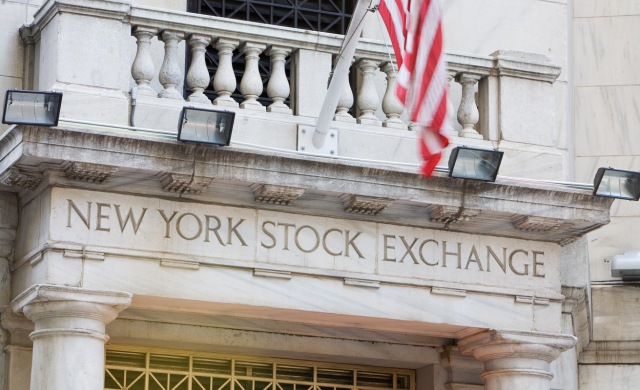The major U.S. index futures on the Dow Jones, S&P and Nasdaq are currently pointing to a higher open on Friday, with stocks likely to move back to the upside following the sharp pullback seen in the previous session.
The upward momentum on Wall Street comes as traders continue to keep a close eye on the latest developments on the tariff front.
The futures had moved to the downside following news China plans to increase tariffs on U.S. imports to 125 percent beginning Saturday.
The 125 percent would match the tariff on China goods announced by President Donald Trump earlier this week, although a White House official told CNBC the effective rate is 145 percent when combined with a 20 percent fentanyl-related tariff.
However, the negative sentiment was offset by news that the European Union is suspending its planned countermeasures to Trump’s tariffs for 90 days.
European Commission trade spokesperson Olof Gill also told Ireland’s RTE radio European Trade Commissioner Maros Sefcovic will travel to Washington on Sunday to “try and sign deals.”
The markets may also benefit from a positive reaction to earnings news from financial giants JPMorganChase (NYSE:JPM), Morgan Stanley (NYSE:MS) and Wells Fargo (NYSE:WFC).
Shares of JPMorganChase, Morgan Stanley and Wells Fargo are all seeing pre-market strength after the companies reported better than expected quarterly earnings.
Following an historic rally over the course of Wednesday’s session, stocks showed a substantial move back to the downside during trading on Thursday. The major averages all posted steep losses but remain well off their recent lows.
The major averages ended the day off their worst levels but still sharply lower. The Nasdaq plunged 737.66 points or 4.3 percent to 16,387.31, the S&P 500 tumbled 188.85 points or 3.5 percent to 5,268.05 and the Dow slumped 1,014.79 points or 2.5 percent to 39,593.66.
The sharp pullback on Wall Street came as traders looked to cash in on the spike seen in afternoon trading on Wednesday after President Donald Trump announced a 90-day pause on new “reciprocal tariffs.”
Ongoing concerns about rising trade tensions between the U.S. and China also weighed on the markets, as Trump excluded the country from the pause and even raised the tariff on Chinese goods to 125 percent.
Uncertainty about what will happen between now and the end of the 90-day pause may also have led to some apprehension on Wall Street.
“While the 90-day pause is welcome news for stocks, the lack of long-term clarity may become more of an issue as time goes on,” said AJ Bell investment director Russ Mould.
Meanwhile, traders largely shrugged off a Labor Department report unexpectedly showing a slight decrease by U.S. consumer prices in the month of March, potentially viewing the data as “old news.”
The report said the consumer price index edged down by 0.1 percent in March after rising by 0.2 percent in February. Economists had expected consumer prices to inch up by 0.1 percent.
Excluding food and energy prices, the core consumer price index crept up by 0.1 in March after rising by 0.2 percent in February. Core prices were expected to rise by 0.3 percent.
The report also said the annual rate of consumer price growth slowed to 2.4 in March from 2.8 percent in February. Economists had expected the pace of price growth to slow to 2.6 percent.
The annual rate of core consumer price growth also fell to 2.8 percent in March from 3.1 percent in February. Core price growth was expected to dip to 3.0 percent.
“The March CPI was stale data even before it was released given the large tariff changes in motion and the inflationary impact it will have in the coming months,” said Nationwide Chief Economist Kathy Bostjancic.
She added, “While it is marginally helpful to have a softer reading heading into the ratcheting up of tariffs, many of the categories that experienced a decline or were tame will face upward pressure in the coming months.”
A separate report released by the Labor Department showed first-time claims for U.S. unemployment benefits crept slightly higher in the week ended April 5th.
Oil service stocks pulled back sharply along with the price of crude oil, dragging the Philadelphia Oil Service Index down by 8.9 percent.
Airline stocks also showed a significant move back to the downside, resulting in an 8.4 percent nosedive by the NYSE Arca Airline Index.
Substantial weakness was also visible among semiconductor stocks, as reflected by the 8.0 plunge by the Philadelphia Semiconductor Index.
Oil producer, computer hardware, banking and biotechnology also saw considerable weakness, while gold stocks bucked the downtrend amid an extended rebound by the price of the precious metal.

Dow Jones, S&P, Nasdaq, Futures Pointing To Initial Strength On Wall Street
by
Tags: